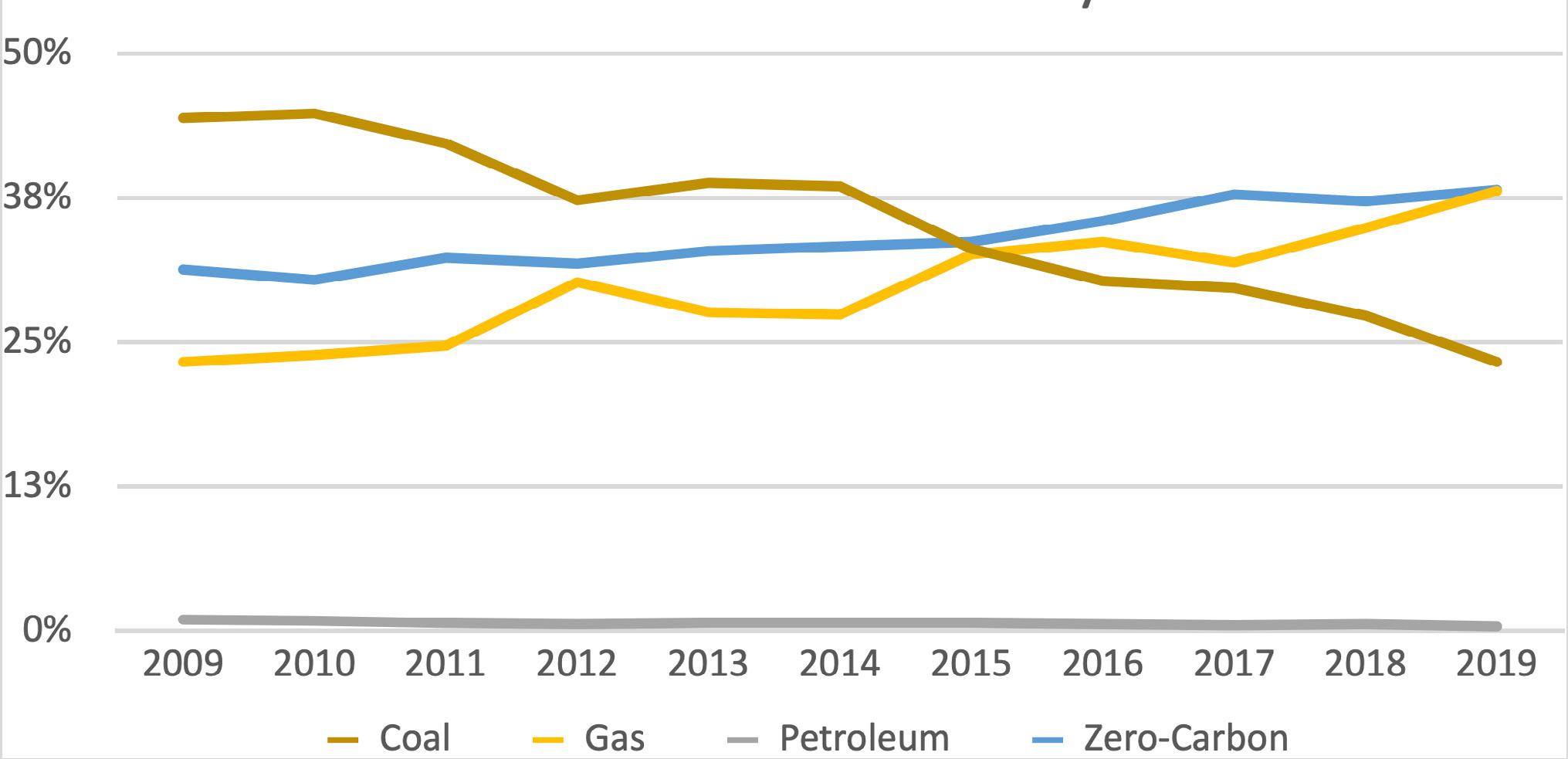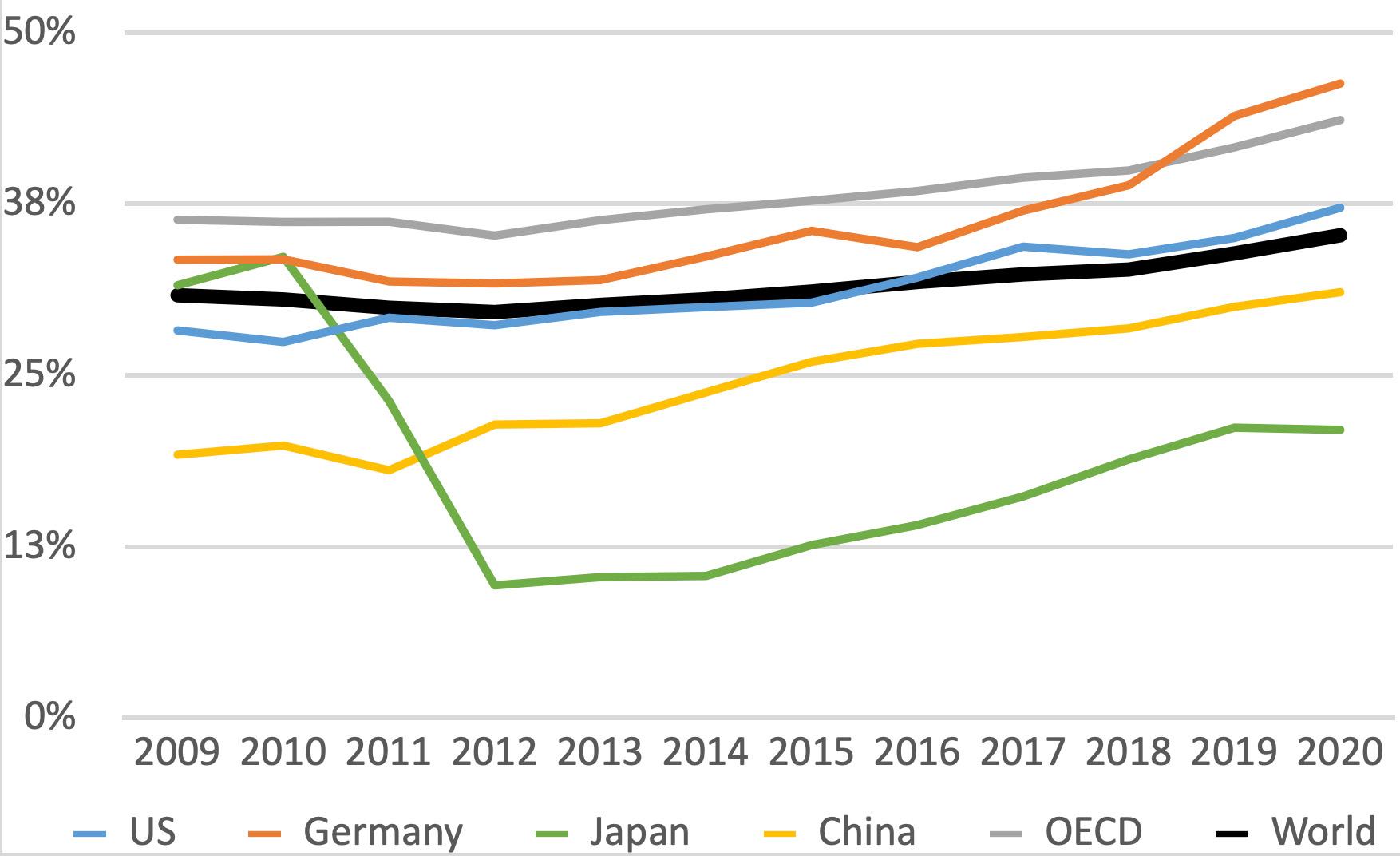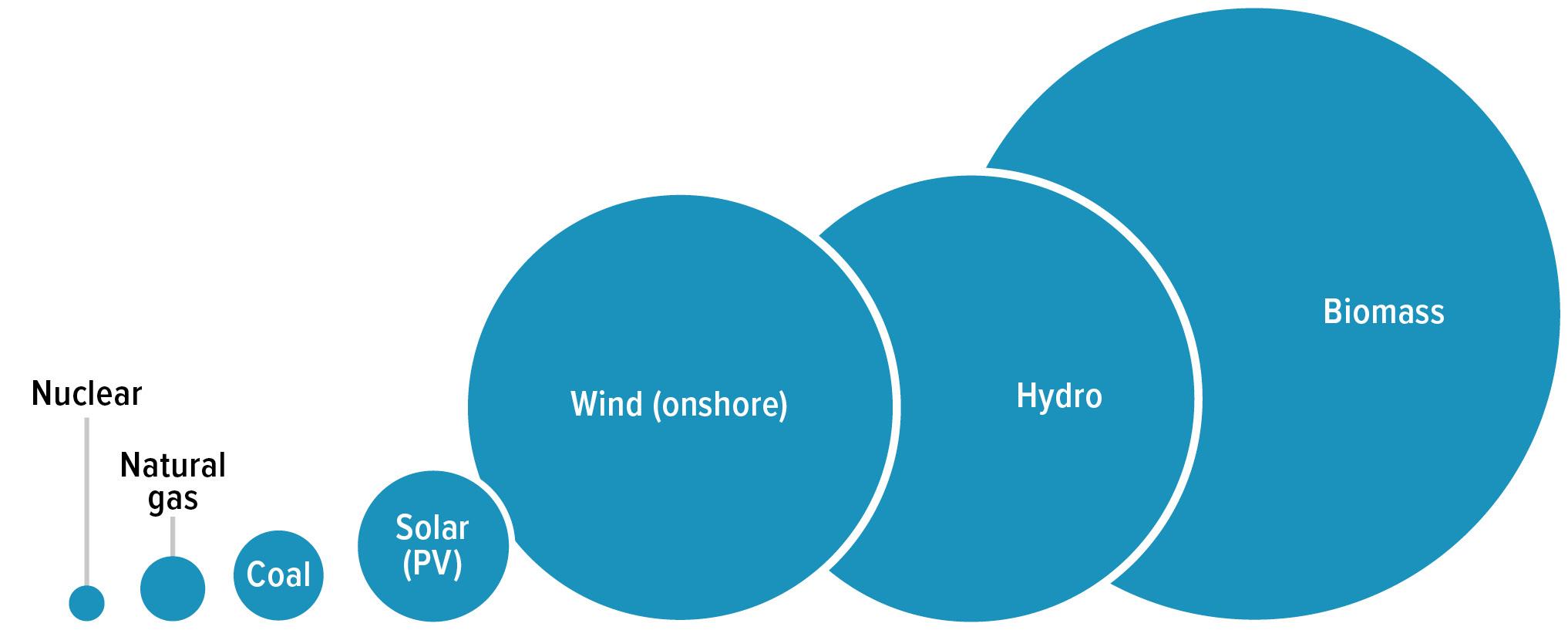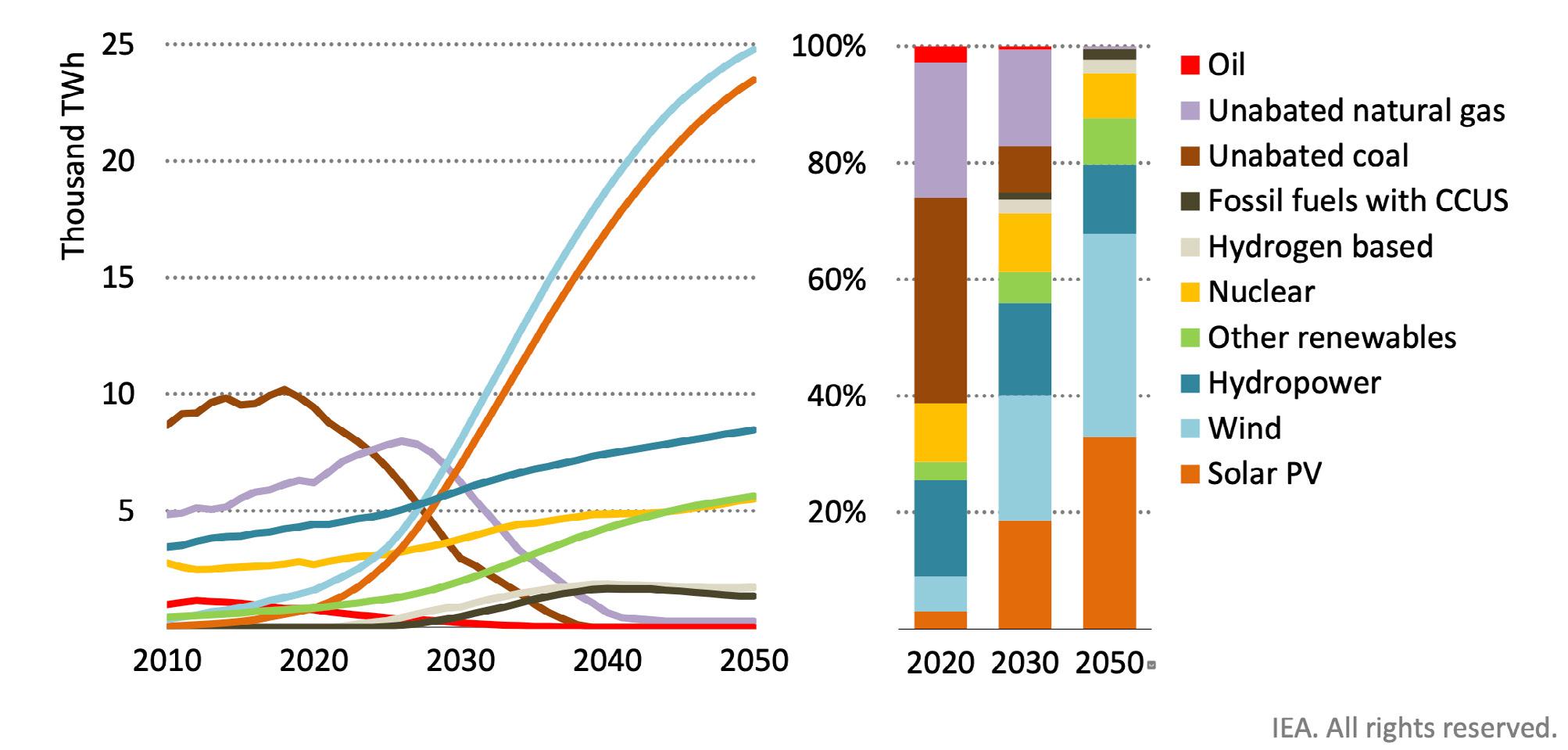
6 minute read
Conclusion
In the context of the energy crisis triggered by the war in Ukraine, as well as the ongoing commitment to addressing climate change, many countries have made an enhanced commitment to reducing their dependence on fossil fuels. The challenges to achieve these reductions will be significant, and will be different for each country. For example, to achieve the IEA’s net-zero targets, renewable generation would need to grow by 940 GW per year on average between 2030 and 2050, four times the record pace achieved in 2020.112 Transmission capacity and energy storage, including new forms of energy storage not yet deployed, will also need to be added in vast quantities.
Nuclear energy can contribute to energy security and decarbonization efforts and increase the likelihood that an energy transition can be achieved in the time required, through providing zero-carbon power that is not dependent on local renewable resources, does not require storage to produce consistent power, and requires less land than renewable generation. The IPCC itself, the International Energy Agency, and many governments have concluded that nuclear energy can be a key component of these transition efforts.113 The instability driven by the war in Ukraine has led to increasing recognition that nuclear energy can be a key tool to address both climate concerns and energy security.
The United States benefits from substantial renewable resources, but nuclear power could serve a significant role, especially in key regions, as a dispatchable power resource and as a source of industrial energy and hydrogen or alternative fuels. Japan has much more limited options to pursue decarbonization, and appears poised to pursue a difficult and expensive course of continuing its reliance on imported fuels (fossil and, later, hydrogen) and even the ability to export carbon dioxide for sequestration elsewhere. Should Japan be able to rebuild public trust in the technology, nuclear energy is technically well suited to its energy challenges and could provide power and hydrogen while accommodating the country’s geographic and electric-transmission constraints. Rebuilding trust is feasible, as evidenced by the support for nuclear energy in many parts of Europe and from the members of the European Parliament, and the recognition by many governments and advocates that it will need to be part of a net-zero future.114
Policy Recommendations
There are a range of policy options that could enable the United States and Japan to strengthen their ability to achieve decarbonization objectives while improving energy security, reliability, and resilience. In particular, policymakers should consider the following actions.
•Encourage and support international cooperation in advanced nuclear development and deployment. The United States is supporting the future of nuclear power with financial assistance through the ARDP, the Inflation Reduction Act, and other programs, as well as past and pending legislative efforts. These efforts could be enhanced through international partnerships that could involve investments and/or supply commitments, such as IHI Corporation’s and JHG Holdings’ investments in NuScale, Mitsubishi’s and JAEA’s agreements to cooperate with TerraPower on the development of sodium-cooled fast reactors, or joint research and development, such as participation in the Versatile Test Reactor (VTR).115 Japan’s Green Growth Strategy describes a roadmap on SMRs that includes Japanese participation in foreign demonstration projects.116 Cooperation in international projects could be essential to compete with Russia and China, including strengthening cooperation on financing nuclear projects.
112 “Net Zero by 2050.” 113 “Global Warming of 1.5°C,” Intergovernmental Panel on Climate Change,” https://www.ipcc.ch/sr15/ and https://www.iea.org/reports/net-zero-by-2050. 114 Bordoff, “3 Reasons Nuclear Power Has Returned to the Energy Debate.” 115 “IHI Corporation Enters Small Modular Reactor Market Through Investment in NuScale Power,” IHI, press release, May 27, 2021, https://www.ihi.co.jp/en/all_news/2021/ resources_energy_environment/1197417_3360.html; “JGC Holdings Enters EPC Business for Small Modular Reactors (SMRs) Invests in U.S. Company NuScale Power,” JGC Holdings, press release, April 6, 2021, https://www.jgc.com/en/news/2021/20210406.html; “US, Japanese Firms Agree to Cooperate on Fast Reactors,” World Nuclear News, January 27, 2022, https://www.world-nuclear-news.org/Articles/US,-Japanese-firms-agree-to-cooperate-on-fast-reac. 116 “‘Green Growth Strategy Through Achieving Carbon Neutrality in 2050’ Formulated.”
Secretary of Energy Jennifer Granholm has commented that partnerships between nations and industries may be key for US nuclear developers and operators to participate in the global clean-energy market.117 One action that could enhance cooperation would be to remove anachronistic restrictions on foreign ownership in nuclear power plants.118
•Accelerate the development of a reliable supply chain.
While the ARDP and other programs help support initial deployments of advanced technologies, a key to a successful advanced-reactor industry will be efficient manufacturing and a reliable supply chain. The weakened nuclear manufacturing base has also been cited as a factor in the challenges to recent conventional nuclear projects.119 International cooperation, such as participation by
Japan’s strong manufacturing sector, perhaps in the form of advance commitments to creating manufacturing capabilities, could help to address this need.
•Work toward regulatory harmonization: Similarly, international cooperation could help achieve harmonized, and more efficient, licensing processes. The reintroduced
American Nuclear Infrastructure Act would authorize the
Nuclear Regulatory Commission (NRC) to support international regulatory cooperation.120 Licensing improvements that will help shorten licensing timelines and reduce the need to repeat licensing steps for international deployment will be essential to growing the international market, and enabling advanced reactors to contribute to decarbonization.
•Consider a path toward advanced nuclear demonstration in Japan. Japan is seeking to rebuild public trust in nuclear power, which will be an essential component of its decarbonization efforts. Currently, that effort is almost entirely focused on restarting existing reactors. The Green Growth Strategy contemplates Japanese progress in advanced nuclear energy principally through research and participation in demonstrations outside Japan. A demonstration project within Japan, whether focused on electric supply or, perhaps, hydrogen production, would be consistent with Prime Minister Kishida's renewed emphasis on nuclear power, and could offer a different, and perhaps more forward-looking, framework for rebuilding trust. To the extent Japan could make progress on advanced nuclear power and hydrogen production from nuclear energy domestically, perhaps even using nuclear desalination, it would not only support its own self-sufficiency goals, but also develop a product for export to other countries with limited renewable-resource options. Of course, the government also needs to maintain consistent progress toward restarting the remaining reactors that have not been decommissioned, and to support an efficient path toward achieving the lifetime extensions that will be necessary to meet the objectives in the Strategic Energy Plan, while maintaining the focus on safety that is a central principle of the plan.
The challenges to reduce dependence on fossil fuels, improve energy security, and meet climate commitments will be significant. Nuclear power can help achieve those objectives through its ability to generate power, and potentially supply industrial energy and zero-carbon fuels, without carbon emissions, in a compact land area, regardless of geography or renewable resource conditions. Both the US and Japanese governments support the preservation of existing nuclear power and demonstration of advanced nuclear generation. Additional efforts could improve the prospects for successfully addressing the sources of climate change in time to mitigate climate impacts, and reducing future threats to energy security.
117 Jonathan Tirone, “Top U.S. Energy Official Sees ‘Unusual Partnerships’ for Nuclear,” Bloomberg, September 21, 2021, https://www.bloomberg.com/news/articles/2021-09-21/top-u-s-energy-official-sees-unusual-partnerships-for-nuclear. 118 Matt Bowen, Jennifer T. Gordon, and Jackie Siebens, “Strengthening Cooperation with Allies Could Help the United States Lead in Exporting Carbon-Free Nuclear Energy,” EnergySource, October 7, 2020, https://www.atlanticcouncil.org/blogs/energysource/strengthening-cooperation-with-allies-could-help-the-united-states-lead-in-exporting-carbon-free-nuclear-energy/. 119 “Reducing the Costs of Nuclear Power on the Path Towards a Clean Energy Future,” Nuclear Energy Agency, July 2, 2020, https://www.oecd-nea.org/jcms/pl_37787/reducing-the-costs-of-nuclear-power-on-the-path-towards-a-clean-energy-future. 120 Roma and Fishman, “American Nuclear Infrastructure Act Makes a 2021 Comeback.”






